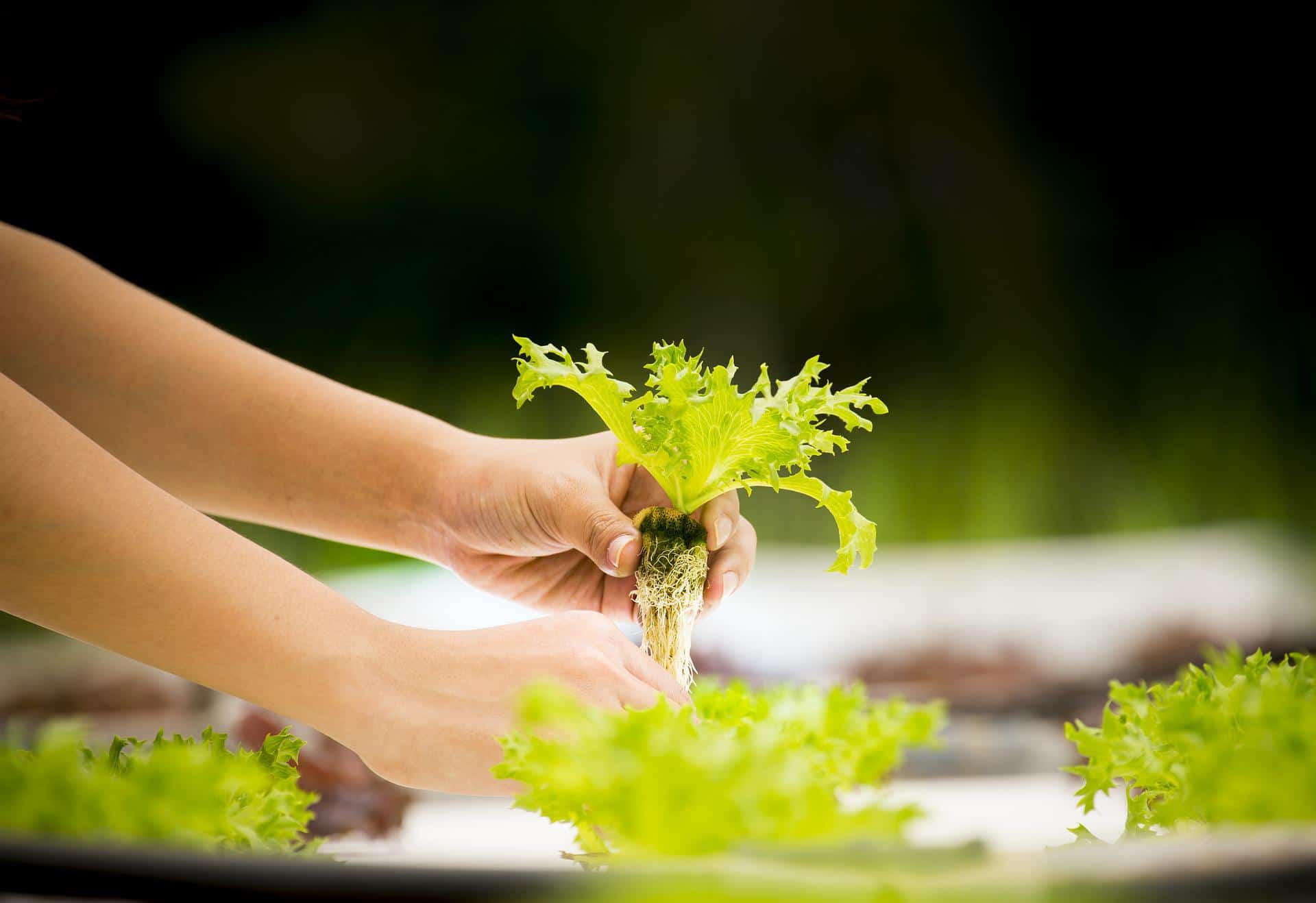Hydroponics is a method of growing plants without soil by substituting a different material for soil and growing the plants in nutrient-rich water. There are many ways on how to start a hydroponic farm, but the main parts stay the same.
First, hydroponic farms don’t need soil, so you’ll need a system that works without it. Your hydroponic farm also needs the right plants, choose them wisely. To keep everything running smoothly, you must care for your plants and monitor your system.
Building a hydroponic system for vegetable farming does not have to be costly or space-intensive. Using a few pieces of modified PVC pipe and a water pump which is a relatively simple hydroponic vegetable garden can be constructed.
What Do You Need To Start A Hydroponic Farm?

Fresh Water
You’ll need pH-balanced water that has been filtered. You can adjust the acidity of your water using solutions available at your local hardware, garden, or hydroponic store.
Oxygen
Roots get oxygen from soil air pockets in traditional farming. Depending on the situation, you will need to leave space between your plant’s base and the water reservoir or purchase an air stone or air pump to oxygenate your container (think bubbles in a fish tank) (imagine bubbles in a fish tank).
Root Support
Even without soil, a plant’s roots need something to adhere to. Materials can include things such as perlite, vermiculite, coconut fiber, peat moss, and rockwool. Avoid compacting materials or those that do not retain moisture.
Nutrients
As with plants grown in the ground, your plant needs a lot of nutrients to remain healthy and productive, such as phosphorus, magnesium, calcium, and other elements. When growing plants without soil, you need to add this “plant food” to the water they receive.
Lights
Indoor plant cultivation may necessitate the purchase of specialized lighting. Each plant has specific requirements for the amount and placement of its light source.
Fundamentals On Hydroponic Farming
Hydroponic farming is when plants are grown in water instead of soil. It might look like a difficult process, but it’s actually pretty easy. Think about the things that plants need to grow: water, food, air, light, space, and time.
Since hydroponic farming is done in a controlled environment, it is a great way to grow plants indoors. You can set up a hydroponic farm anywhere, such as:
- Remote communities
- Urban centers
- Extreme climates (arctic, desert)
Why Grow Without Soil?
Indoor plant cultivation may necessitate the purchase of specialized lighting. Each plant has specific requirements for the amount and placement of its light source. This seemingly subtle change in the way I produce food is revolutionary because it enables growers to produce food anywhere in the world, at any time of year, and with fewer resources.
Grow Anywhere
Seasons and regions are currently shifting due to temperature changes. Even under “normal” conditions, many places have unfarmable soil.
Most store-bought vegetables have been transported long distances and lost nutritional value.
Our container farms are proudly serving my communities. Even a restaurant that needs fresh produce can build a farm. Hydroponics doesn’t require stopping for the season or risking crop loss from bad weather.
Higher Yields
Well-managed hydroponic plants thrive. Because their roots are nutrient-rich, plants spend more time growing upward and less time and energy searching for food.
Hydro plants can mature up to 25% faster than soil plants, resulting in a higher crop yield, depending on the system and care.
Fewer Resources
Hydroponic systems use less water than soil-based systems. Closed systems don’t evaporate as much as open ones. Hydroponic systems can filter, replenish, and reuse water, so none is wasted.
Indoor hydroponic plants need fewer “resources” Because hydro crops are resistant to pests and plant diseases, and pesticides and other dangerous chemicals are not used.
Easy Troubleshooting
How often have you noticed one plant thriving while another is wilting in your garden? In such a situation, it’s difficult to determine which variable killed the plant. Pests? Are the soil nutrients unique there?
Hydroponics lets you control plant growth conditions. Therefore, isolating variables and conducting experiments is easy. Once you find the optimal combination of light, pH balance, and nutrients, you can replicate success.
Steps To Start A Hydroponic Farm

Area Selection To Set Up A Hydroponic Farm
Choose a 10×10-m2 warm area. Hydroponics requires a sterile, pathogen-free area. Ensure the indoor hydroponic farm gets enough sunlight. You can also use T5 fluorescents for home hydroponics farming.
Purchase And Installation Of A Hydroponic System At Home
Always recommended for domestic vegetable cultivation is the purchase and installation of an ebb and flow hydroponic system.
Collection And Sowing Of Vegetables
After installing the hydroponic system, purchase vegetable seeds and sow them in the ebb and flow system.
Best Vegetables For Hydroponics At Home
I use hydroponics to utilize and cultivate different plants such as cauliflower, tomato, chili, and brinjal . Furthermore, leafy vegetables such as spinach, sorrel, lettuce, fenugreek, coriander, and mint are ideal for hydroponic cultivation.
Watering Of Hydroponics
In hydroponics, I replace irrigation water every 15 days. Ensure that such an irrigation system is present.
Fertilization In Hydroponics Farm Setup
To provide nutrients to the plants in the hydroponics farm, apply the recommended nutrient doses using the fertigation technique.
Harvesting Of Vegetables In Hydroponics
In hydroponic systems, plants can live for four to five months and I can harvest them 45 to 50 days after sowing meanwhile, I can harvest leafy vegetables in hydroponics 30 days after planting.
Tips On How To Start Your Own Hydroponic Farm
Start With A Small Quantity
The best way to start farming is on a small scale until you get used to it. Also, people who are still trying to find the best hydroponic system for them can cut down on the amount and cost of damage if they can’t find one that works best for them.
Keep Planting
Farming can be sad sometimes, especially when plants don’t grow the way they should. I think you should ignore this and look for ways to make the plant more productive instead. When the plants are growing as well as they can, it’s time to add more kinds to make a wide range of crops.
Work First, Rewards Come Next
As with traditional farming and almost everything else in life, you have to work hard to get what you want. Not only did I try to find the best hydroponic system for my farm, but I also talked to experienced farmers in the places he visited to learn everything I could about hydroponic farming. So, I would know how to take care of a hydroponics farm, which would help him in the long run.
Even if it seems hard, I think others should try hydroponic farming because it has so many benefits. The benefits include being able to farm all year long, having a sustainable way to grow clean and safe food, and having a good way to make money.
Final Thoughts
Hope the article might have given some idea to set up a hydroponic farm at home. One can get more details on how to do hydroponics by reading books on the subject and making sure you purchase quality materials and vegetable seeds for growing in a hydroponic system.

